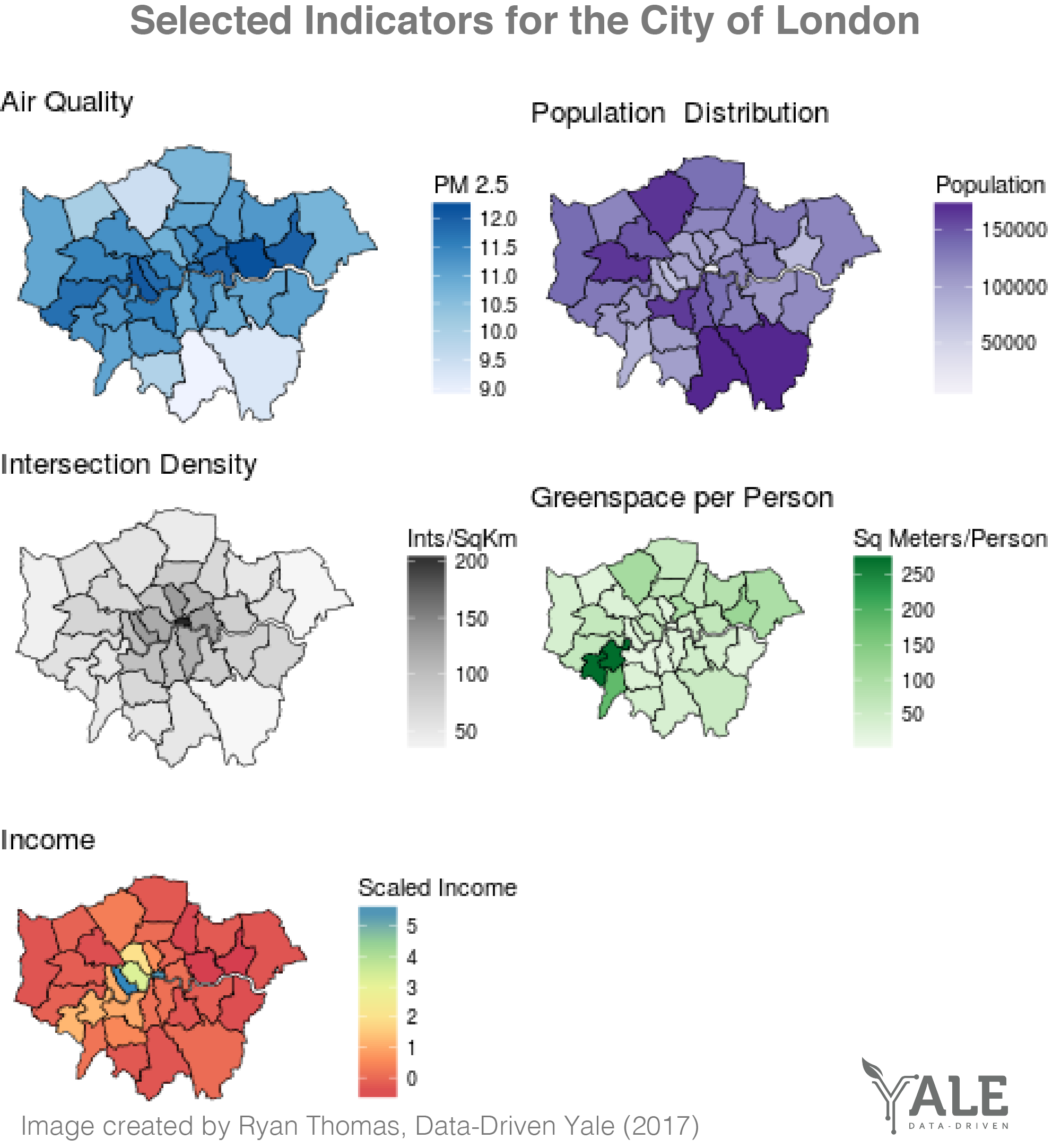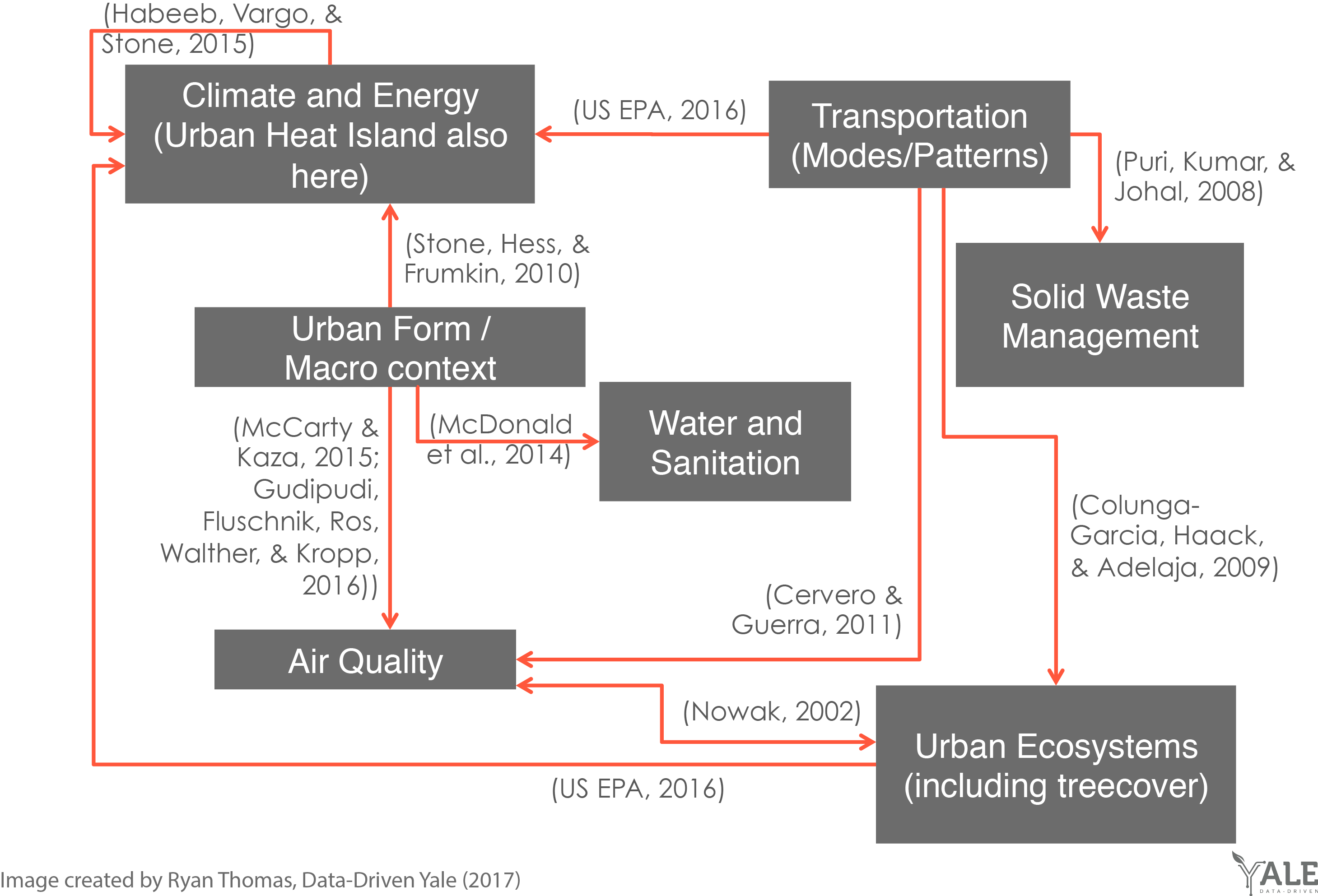
The term ‘sustainability’ has become synonymous with environmentalism in popular culture. It is often used to refer to climate change mitigation and adaptation; the ‘reduce, reuse, and recycle’ movement; cycling to work; vegetarianism; and so on. Within academic literature, the ambiguity of sustainability overall has bled into debates about sustainable development and urban sustainability, creating a barrier for advocates of these movements. Data-Driven Yale Researcher, Ryan Thomas, recently participated in a panel discussion at the annual American Association of Geographers Conference, to discuss our approach to urban sustainability research. (See our recent post if you would like to get involved.)
Disagreements about what it means to be sustainable often relate to the methods used to measure it. For example, the difference between so-called “weak” and “strong” sustainability is about methods of calculating the regeneration of a natural resource. There is general agreement that environmental degradation is not sustainable, and our current work developing an urban environmental index is based on the idea that equity is a key component to limiting environmental degradation. This approach to measuring urban environmental quality involves developing indicators to uncover differences in environmental quality at the neighborhood scale.

Figure 1. Selected indicators from London’s environmental performance shows disparity between neighborhoods.
Many existing urban environmental indices result in an overall score for cities or single indicators that uni-dimensionally apply to an entire urban area. Our framework for measuring urban environmental quality, however, focuses on the critical issue of spatial scale to uncover patterns in urban areas. Because incomes also vary by neighborhood, this approach allows us to evaluate the relationship between neighborhood income and environmental indicators. Figure 1 shows preliminary analysis of London’s neighborhoods for selected indicators.
We presented two key points on the issue of framing sustainability:
- Sustainability metrics must account for multiple environmental indicators, not only greenhouse gas emissions – a common metric that has become popular to measure ‘low-carbon’ or ‘eco-cities.’ Existing research examining the relationship between urban environmental indicators has identified interactions between many of the key indicators, but it is still inconclusive about the exact nature of these relationships. Figure 2 shows the simultaneous interconnectivity and siloed nature of literature examining various drivers of urban environmental quality. Our urban environmental index integrates these studies using publicly available data to try and identify patterns among all of the indicators displayed here.

Figure 2. This diagram shows the connections between key environmental indicators. Red lines with an arrow indicate a direction of influence published in the article cited in parentheses.
- Environmental indicators should compare pollution levels with respect to the demographic groups affected. Climate change literature shows that income is a key determinant of vulnerability to environmental shocks. Yet, several studies of the US have shown that pollution levels are concentrated in low-income areas. There are several reasons for this finding, including land use policies that reinforce disproportionately high levels of pollution in low-income areas. Politically and socially powerful players are successful at ensuring pollutants are not spewed into their “backyard”[1]. To address the problem of climate change (or environmental justice more broadly), researchers and practitioners alike should focus on the issue of equity. This point begins to confront the issue of power in environmental justice.
Through our work on urban environmental performance, we aim to inform policy and research on urban sustainability. Stay tuned for updates as we progress toward finalizing the index in winter 2018.
Notes:
[1] This refers to the concept of “not-in-my-backyard” (NIMBYism), which is often used to describe protectionism over one’s immediate surroundings. Unless there are regulations in place preventing it, this leads to more powerful and engaged stakeholders pushing out unwanted businesses.


Recent Comments